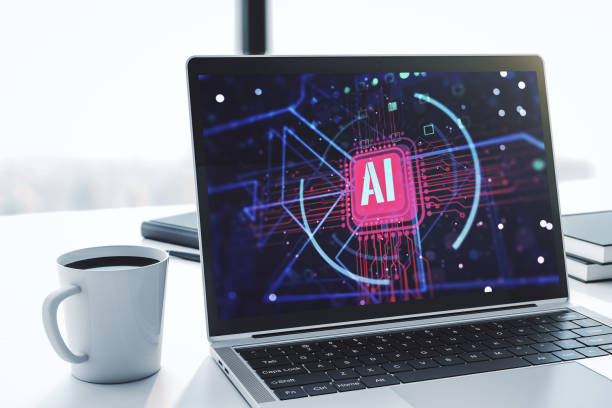Introduction to On-Page SEO and Its Critical Importance

In today’s competitive internet world, effective online presence is not achieved merely by having a beautiful website.
For your content to reach its target audience, you need to be seen by search engines.
This is where the concept of #On-Page_SEO (On-Page SEO) comes into play.
On-page SEO refers to a set of actions taken within your website to optimize its pages for search engines and users. These actions include optimizing content, HTML code, and user experience (UX).
The main goal of on-page SEO is to send clear signals to search engines about the topic and quality of your page.
Search engines, by better understanding your content, can display it in more relevant results.
The importance of on-page SEO is so great that without it, even with the best content, you will have little chance of achieving a high rank in search results.
This is a #primary and #fundamental step for any website looking to increase organic traffic and attract potential customers.
Many webmasters focus only on off-page SEO, but are unaware that the foundation of visibility begins within the website.
On-page SEO helps search engines understand what your content is about and how useful it is to users.
On-page optimization also significantly helps improve user experience, as properly optimized pages usually load faster, are more readable, and make the #user’s path to finding desired information easier.
In this comprehensive guide, we will educationally examine all aspects of on-page SEO so that you can fully optimize your site for search engines. Stay with us to get acquainted with advanced on-page SEO techniques step by step.
This introduction justifies why deep learning of on-page SEO is vital for your online success.
Did you know that 94% of the first impression of a company is related to its website design?
Rasaweb, by providing professional corporate website design services, helps you create the best first impression.
✅ Create a professional and trustworthy image for your brand
✅ Easier attraction of potential customers and improvement of online standing
⚡ Get free corporate website design consultation
Keyword Research; The Heart of On-Page SEO

After understanding the importance of on-page SEO, the next and perhaps most important step is #keyword_research.
This #vital step helps you understand your audience’s language and produce content that is exactly what they are looking for.
Keyword research is not just about finding high-volume search terms, but understanding the user intent behind the search.
A keyword can indicate a need for information, a desire to buy, or even a specific question.
To perform this research, you can use various tools such as Google Keyword Planner, Ahrefs, Semrush, or even Google’s own search bar (for auto-suggestions).
It’s important to look for keywords relevant to your field that have a decent search volume but are not highly competitive.
Long-tail Keywords, which usually consist of three or more words, often have higher conversion rates and less competition, making them very useful for on-page SEO.
For example, instead of “SEO”, use “best on-page SEO practices for WordPress site”.
These more precise keywords drive a more targeted audience to you. After collecting your keyword list, you should categorize them and identify primary and secondary keywords for each page of your site.
This process is a #specialized and precise part of on-page SEO and requires careful data analysis.
Don’t forget that the goal is not to stuff the page with keywords (which is called Keyword Stuffing and penalized by Google), but to use them naturally and logically in the text.
A question-provoking content often uses keywords related to common user queries, which itself helps improve page ranking.
By choosing the right keywords, you not only pave your way in optimizing for search engines but also provide a solid foundation for producing valuable and user-friendly content.
Content Optimization; The Backbone of On-Page SEO

After precise keyword selection, it’s time for #content_optimization.
Content is king, and this phrase holds true more than ever in on-page SEO.
Content optimization means writing text that is both understandable to search engines and engaging and valuable to users.
This process involves naturally placing keywords within the text, using appropriate headings (H1, H2, H3), and creating a logical flow in the content.
The main keyword should be used in the main heading (H1) and in the first paragraph of the text.
Then, throughout the text, use secondary keywords and synonyms to help search engines better understand the semantic scope of your content.
Content length also matters; generally, longer and more comprehensive content (over 1000 words) that addresses all aspects of a topic performs better. This is an #explanatory and comprehensive approach to content production.
Text readability is also very important.
Use short paragraphs, clear sentences, bulleted or numbered lists, and bold important words to improve user experience.
Additionally, optimizing images (alt text, compression) and adding videos also help enrich the content.
On-page SEO is not limited to text, but relates to every element on your page that can affect user experience and search engine understanding.
To better understand the importance of this topic, pay attention to the table below, which shows the key factors in content optimization:
| Factor | Explanation | Importance in On-Page SEO |
|---|---|---|
| Keywords | Natural and logical use of primary and secondary keywords in text, titles, and subtitles. | Essential for topic identification by search engines. |
| Content Quality | Comprehensive, accurate, unique, and valuable content that addresses user needs. | Very high; primary factor for user retention and reducing bounce rate. |
| Content Structure | Use of headings (H1-H6), short paragraphs, lists to improve readability. | High; helps rapid content scanning by users and search engine crawlers. |
| Content Length | Long and comprehensive content (over 1000 words) that fully covers the topic. | Medium to high; indicates content depth and expertise. |
| Image Optimization | Use of appropriate Alt Text, image compression, correct file naming. | Medium; helps image ranking and improves site speed. |
Content optimization, as an integral part of on-page SEO, requires a comprehensive approach and user-centric view.
Your content should not only convey information but also provide a pleasant experience for the reader.
This part of on-page SEO is, in fact, a bridge between the audience and search engines that ensures the quality and relevance of your content.
Optimizing HTML Tags and Meta Tags; Your Page’s Identity Card
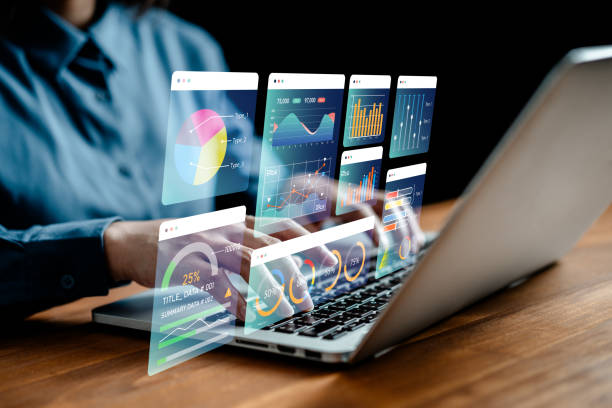
After content, #HTML_tags and #meta_tags play a vital role in #on-page_SEO.
These elements help search engines better understand your page’s content and display it to users.
The most important tags in this regard include the Title Tag, Meta Description, and Heading Tags (H1-H6).
Title Tag: This tag is the most important On-Page SEO element after content.
Your page’s title, which is displayed in the browser tab and search results, should include your main keyword and be a maximum of 60-70 characters long to be fully displayed.
This title should be attractive and persuasive to encourage users to click.
Meta Description: These short descriptions (about 150-160 characters) are displayed below the page title in search results.
Although meta descriptions do not directly affect rankings, they significantly impact your click-through rate (CTR).
These descriptions should include the main keyword and a call to action to encourage the user to enter your site.
This section is considered a #guide for users.
Heading Tags (H1-H6): These tags are used to structure your content.
The H1 tag is used for the main page title, and H2 to H6 are used for subtitles.
Proper use of these tags not only helps text readability but also shows search engines which sections are more important and what your content’s structure is.
The main keyword should be in H1, and secondary keywords in H2 and H3.
Optimizing these tags together empowers your on-page SEO and gives search engines a clear picture of your page’s content.
These optimizations are a #specialized aspect of on-page SEO and should be done with care and strategy.
One of the news aspects in SEO is that Google constantly changes its search result display algorithms, so you should always be aware of best practices and new updates.
Did you know that 85% of customers check your company’s website before any interaction?
With Rasaweb, build a corporate website worthy of your reputation.
✅ Increase customer credibility and trust
✅ Attract quality leads
⚡ Get free website design consultation
URL Structure and Internal Linking; Navigation for Engines and Users
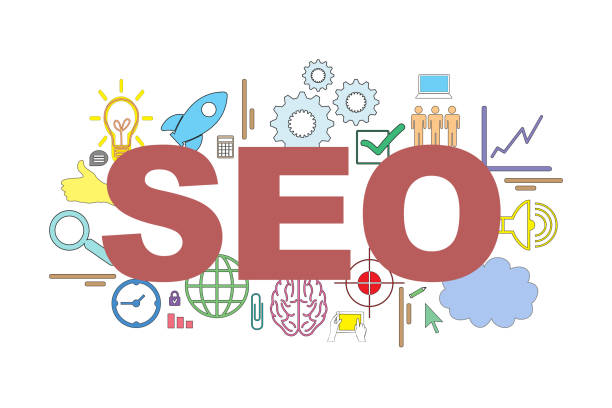
URL structure and internal linking are two other important factors in #on-page_SEO that are often overlooked, but play a vital role in ranking and user experience.
An #optimized_URL not only helps users understand their path on your site, but also shows search engines what your page is about and where it sits in your site’s information hierarchy.
URL Structure: The URL (Uniform Resource Locator) should be short, descriptive, and contain the page’s main keyword.
Avoid special characters, excessive numbers, and unnecessary words (like “and”, “or”, “in”).
Using hyphens (-) to separate words instead of underscores (_) or spaces is recommended.
For example, instead of yoursite.com/page?id=123, use yoursite.com/on-page-seo-guide.
This is a clear #guide for both search engines and users.
A clean and logical URL simply tells search engines what your content is about and gives users a better sense of your site’s structure.
Internal Linking: Internal links are links that point from one page on your website to another page within the same website.
These links have several benefits:
- They help search engines discover and index (Crawl and Index) your site’s pages.
- They pass SEO authority and “power” throughout your site (Link Juice).
- They improve user experience and keep users on your site for longer.
For effective internal linking in on-page SEO, use relevant and keyword-rich anchor texts.
Anchor text is the text on which the link is placed.
For example, if you are writing about “content optimization” and have a comprehensive article on “keyword research” on another page, you can use the anchor text “keyword research” to link to that page.
Avoid linking to irrelevant pages and make sure your links look natural.
This section provides a precise and #analytical analysis of how to improve site architecture using internal links. A strong internal linking strategy can have a huge impact on your site’s #ranking in #search_results and will indeed be a powerful complement to your other efforts in on-page SEO.
Image Optimization; A Key Element in Visual On-Page SEO

Images play an important role in attracting users and conveying messages, but if not properly optimized, they can lead to slow site loading instead of helping.
#Image_optimization is an important aspect of #on-page_SEO that affects both site speed and the discoverability of your visual content by search engines.
Image File Naming: Before uploading an image, name its file with relevant and descriptive keywords.
Instead of IMG_001.jpg, use on-page-seo-graphic-image.jpg.
This helps search engines understand what your image is about.
Alt Text: Alt Text, or alternative text, is a textual description of an image that is displayed when the image fails to load or for users with visual impairments (using screen readers).
This text should include a relevant keyword and accurately describe the image’s content.
For example, for an image of an SEO chart, the Alt Text could be “Chart of the importance of on-page SEO for ranking”.
This is an excellent opportunity to include keywords naturally and help with your website’s accessibility.
Image Compression and Size: Large images can significantly reduce your page loading speed.
Before uploading, compress images and use appropriate formats (like WebP for the web).
Tools like TinyPNG or Compressor.io can help you reduce file size without losing much quality.
Also, specify the image dimensions (width and height) so that browsers can reserve the necessary space in advance.
Image Captions and Placement: Adding captions to images can help user experience and provide more information to search engines.
Place images in appropriate locations relevant to the text to ensure a logical content flow.
Using high-quality and relevant images, especially for entertaining or explanatory content, can significantly impact audience engagement and improve on-page SEO.
Ultimately, image optimization as part of a comprehensive on-page SEO strategy not only helps improve your ranking but also enhances the visual experience for users.
Site Loading Speed and User Experience (UX); Two Sides of the Same Coin in On-Page SEO

In the current era, users expect web pages to load in a fraction of a second.
#Site_loading_speed and #user_experience (UX) are two inseparable factors in #on-page_SEO that directly affect your ranking in search engines.
Google has repeatedly stated that site speed and UX are important ranking factors, especially with the introduction of Core Web Vitals.
Site Loading Speed: Pages that load quickly have a lower Bounce Rate and engage more users.
Various factors affect site speed, including image size, inefficient coding, too many plugins, hosting quality, and caching.
Tools like Google PageSpeed Insights, GTmetrix, and Pingdom Tools can help you identify and resolve your site speed issues.
Image compression, browser caching, minimizing CSS and JavaScript codes, and choosing a reputable hosting provider are key strategies for speed improvement.
This section provides a #technical and important analysis.
User Experience (UX): UX refers to how easily users can interact with your website and find the information they are looking for.
Good UX includes easy navigation, responsive design for mobile, readable content, and appealing visual design.
Google gives higher scores to websites that provide a positive user experience, as Google’s main goal is to deliver the best results to users.
Core Web Vitals (including Largest Contentful Paint, First Input Delay, and Cumulative Layout Shift) are metrics Google uses to evaluate user experience.
Optimizing these metrics is essential for your #on-page_SEO.
To further clarify the importance of these two factors, refer to the table below:
| Factor | Explanation | Impact on SEO |
|---|---|---|
| Loading Speed | Time required for the page content to fully display to the user. | Direct ranking factor; reduces bounce rate. |
| Responsiveness (Mobile-Friendly) | Compatibility of site design with various devices (mobile, tablet, desktop). | Very important; Google prioritizes mobile. |
| Core Web Vitals | A set of Google’s metrics for measuring user experience (LCP, FID, CLS). | Ranking factors; indicates technical quality of the site. |
| Easy Navigation | Simplicity in finding information and moving between site pages. | Indirect; improves user dwell time and reduces bounce rate. |
| Content Readability | Use of appropriate font, short paragraphs, headings, and white space. | Indirect; increases user engagement and satisfaction. |
Optimizing for speed and UX is a specialized and essential approach in on-page SEO that ensures your site is optimized not only for search engines but also for the most important factor: users. These efforts not only help with ranking but also lead to increased user satisfaction and ultimately, increased conversions.
The Role of Fresh and Updated Content in On-Page SEO
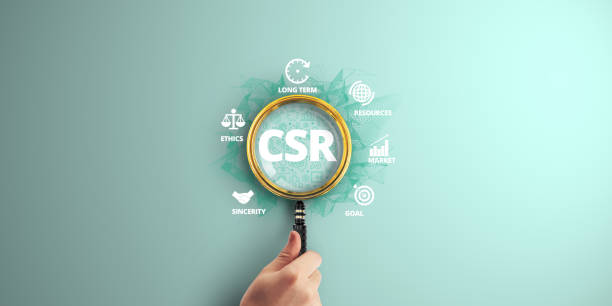
Search engines, especially Google, aim to provide the freshest and most relevant information to their users.
Therefore, #fresh_content and #updating_old_content play a very important role in your #on-page_SEO strategy.
A dynamic site that regularly produces new content or keeps its existing content updated signals to search engines that it is active and authoritative.
Importance of Producing New Content: Producing new and high-quality content helps you to:
- Target more keywords and expand your coverage.
- Increase your authority and expertise in a specific field.
- Attract new traffic through organic searches.
- Create more opportunities for internal and external linking.
Studying #news articles and trends in your industry helps you create up-to-date and engaging content.
Importance of Updating Old Content: Many times, optimizing and updating old content can be even more effective than creating entirely new content.
The reasons are as follows:
- Your old content may already have links (backlinks) that give it power.
- By updating, you can remove outdated information and add new and accurate data.
- You can add new and relevant keywords that you hadn’t discovered before.
- Updated content can be re-crawled and indexed by search engines, giving it a “new life”.
A practical #guide in this area is to periodically (e.g., quarterly) perform a Content Audit and identify your underperforming or outdated content.
For specialized and educational content, continuous updates become even more important, as information in many fields changes rapidly. Google prefers pages with a recent update date, especially for time-sensitive topics.
This activity is vital for maintaining a good ranking in on-page SEO and demonstrates your commitment to providing accurate and useful information to your audience.
Ultimately, a continuous and strategic approach to content is the core of long-term success in on-page SEO and attracting sustainable traffic.
Are you tired of your e-commerce website not generating as much revenue for you as it could? Rasaweb, specializing in professional e-commerce website design, solves this problem for good!
✅ Increase sales rate and revenue
✅ High loading speed and unparalleled user experience
⚡ Get free e-commerce website design consultation
Advanced Tools and Techniques for On-Page SEO
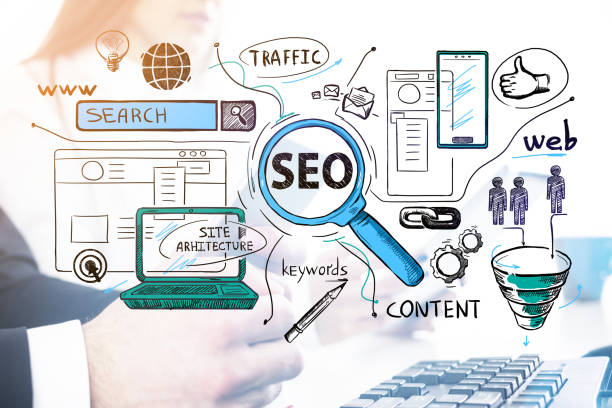
For more precise and effective #on-page_SEO optimization, using advanced tools and techniques is essential.
These tools help you perform deeper analyses, identify problems, and improve your website’s performance.
Google Search Console: This free tool from Google is the most essential tool for any webmaster.
Using Search Console, you can see your site’s performance in search results, check crawling errors, submit your sitemap, and even manually submit pages for indexing.
The information this tool provides about keywords, click-through rates, and impressions is very valuable for on-page SEO optimization.
Google Analytics: Although not directly for SEO, Google Analytics provides vital data about user behavior on your site (such as dwell time, bounce rate, user path).
By analyzing this data, you can identify and address weaknesses in your user experience, which in turn helps your on-page SEO.
Paid Keyword Research Tools (Ahrefs, Semrush, Moz): These tools offer extensive capabilities for keyword research, competitor analysis, backlink checking, and site auditing.
Using them, you can discover hidden keywords, find new opportunities, and build your on-page SEO strategy based on accurate data.
These tools are designed for a #specialized and deep analysis.
Schema Markup (Structured Data): Adding Schema Markup to your website’s HTML helps search engines better understand your content and display it as Rich Snippets in search results.
This can include star ratings, product prices, instructions, and more.
Rich Snippets can significantly increase your click-through rate and are considered advanced aspects of on-page SEO.
SEO Audit Tools (Screaming Frog, Sitebulb): These tools allow you to conduct a full technical audit of your site and identify issues such as broken links, duplicate tags, duplicate content, and indexing problems.
Resolving these technical issues helps improve the overall on-page SEO health of your site.
Using these tools for data analysis can provide you with analytical and highly useful content.
By combining these tools and techniques, you can elevate your on-page SEO strategy to a higher level and gain a significant competitive advantage.
Measuring and Continuous Improvement of On-Page SEO; An Endless Journey
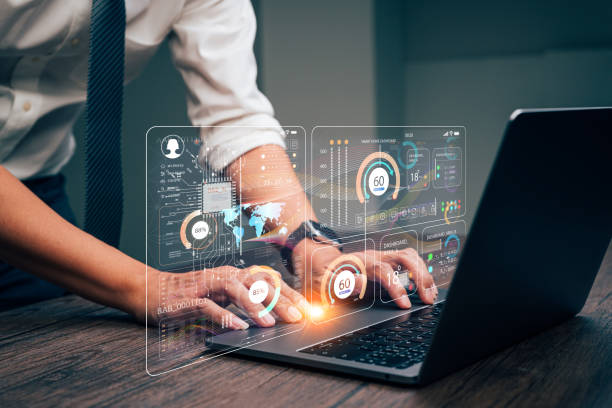
SEO is not a one-time process, but an #ongoing_journey.
After implementing #on-page_SEO strategies, it’s important to regularly measure your performance and make necessary improvements based on data.
The world of SEO is constantly changing; Google’s algorithms are updated, competitors employ new techniques, and search trends evolve.
Key Performance Indicators (KPIs): To measure your on-page SEO success, you should pay attention to several key indicators:
- Keyword Ranking: Has your pages’ ranking for target keywords improved?
- Organic Traffic: Has the number of visitors from search engines increased?
- Bounce Rate: Do users leave your site immediately after entering? A low bounce rate indicates relevant content and good user experience.
- Time on Site: How long do users stay on your pages? High time on site indicates engaging content.
- Conversion Rate: Are visitors converting into customers or users? (e.g., form completion, product purchase)
This section is a #guide and educational for understanding success metrics.
Regular Audits and Updates: Planning for regular SEO Audits is essential.
These audits help you identify technical issues, outdated content, new opportunities for keywords and internal linking.
Always be ready to update your content and adapt your on-page SEO strategy to changes in Google’s algorithms and user needs.
Following #SEO industry news and Google updates can help you always stay one step ahead.
Testing and Optimization (A/B Testing): For continuous improvement, you can conduct A/B tests on various elements of your page, such as titles, meta descriptions, call-to-action buttons, and page layouts.
This helps you understand which changes have the greatest impact on SEO performance and user experience.
On-page SEO is a long-term game, and patience, persistence, and a data-driven approach are crucial for success. By continuously measuring and improving, you can ensure that your website always performs at its peak and achieves the best results in search outcomes.
This concluding section emphasizes that on-page SEO is a dynamic and evolutionary process.
Frequently Asked Questions
| Question | Answer |
|---|---|
| What is Meta Title and why is it important in On-Page SEO? | The Meta Title is the most important on-page SEO element displayed at the top of the browser tab and search results. This title helps search engines and users understand the main topic of the page and should include the main keyword. |
| What role does Meta Description play in On-Page SEO? | The Meta Description is a short summary of the page content displayed below the title in search results. Although it does not directly affect ranking, its attractiveness can increase the click-through rate (CTR). |
| How should keywords be used in page content? | Keywords should be used naturally and relevantly in strategic locations such as the title, headings, first paragraph, and body text. Avoid excessive keyword stuffing. |
| What is the importance of quality and comprehensive content in On-Page SEO? | High-quality, unique, informative, and comprehensive content that addresses user needs is of high importance. Search engines give higher rankings to content that provides real value. |
| What is the application of heading tags (H1-H6) in the On-Page SEO structure? | Heading tags (H1, H2, H3, etc.) are used to structure content and indicate the importance of different sections. H1 is the main title of the page, and each page should only have one H1. Other tags are used for subtitles. |
| How to optimize images to improve On-Page SEO? | To optimize images, use descriptive Alt Text that includes relevant keywords, reduce the image file size without losing quality, and use meaningful and relevant file names. |
| What are the characteristics of a user-friendly URL for On-Page SEO? | A user-friendly URL should be short, readable, descriptive, include main keywords, and be free of extra characters. The URL structure should be hierarchical and logical to be understandable for both users and search engines. |
| How does Internal Linking help On-Page SEO? | Internal linking, by connecting related pages to each other, helps users and search engine crawlers better understand the site structure, passes page authority, and increases the user’s time on the site. |
| What is the impact of page loading speed on On-Page SEO? | High loading speed is crucial for both user experience and SEO ranking. Slower pages may be overlooked by search engines and lead to an increase in bounce rate. |
| Why is Mobile-Friendliness very important in On-Page SEO? | Given the increasing number of searches via mobile devices, having a responsive and mobile-friendly site is very essential for user experience and ranking in search results (Google’s mobile-first indexing). |
And other advertising services from Rasaweb Advertising Agency
Smart Digital Advertising: A new service for increasing customer behavior analysis through optimizing key pages.
Smart Customer Journey Map: A fast and efficient solution for increasing website traffic with a focus on marketing automation.
Smart Custom Software: An exclusive service for growing customer behavior analysis based on dedicated programming.
Smart Link Building: A fast and efficient solution for attracting customers with a focus on marketing automation.
Smart Data Analysis: A fast and efficient solution for improving SEO ranking with a focus on smart data analysis.
And over a hundred other services in the field of internet advertising, advertising consultation, and organizational solutions
Internet Advertising | Advertising Strategy | Advertorial
Resources
Comprehensive Guide to On-Page SEO on SEO20
On-Page SEO from A to Z from Mizbanfa
Webramz On-Page SEO Checklist
What is On-Page SEO? Sitemappro
? Your business deserves the best! With Rasaweb Afarin Digital Marketing Agency, from professional website design to comprehensive digital marketing strategies, realize your digital dream.
📍 Tehran, Mirdamad Street, next to Bank Markazi, Kazerun Jonubi Alley, Ramin Alley No. 6


